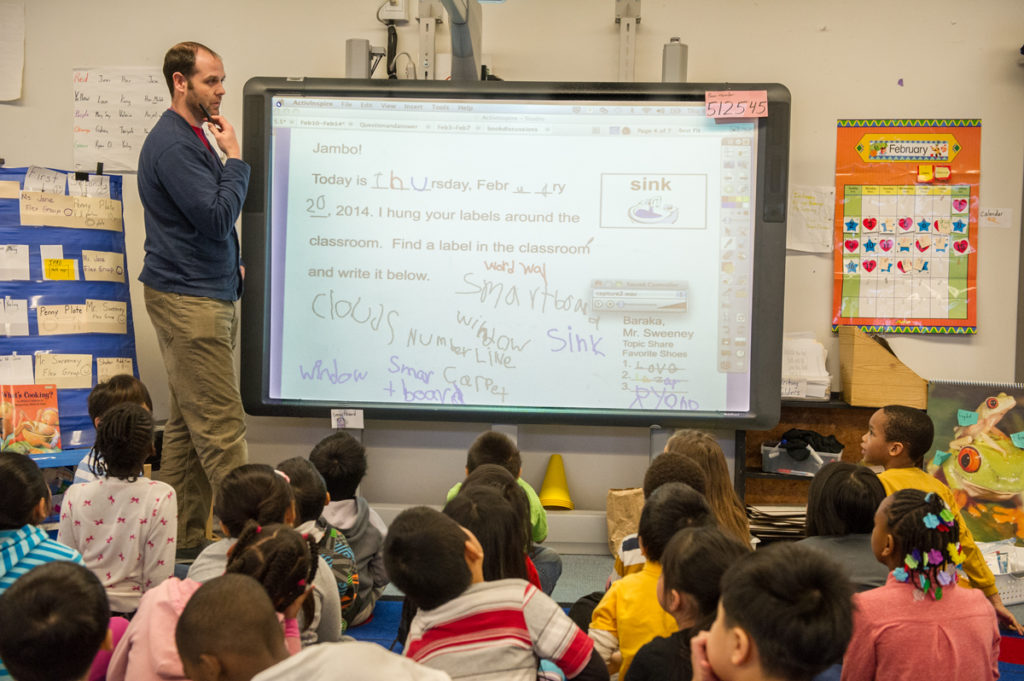
The greeting question during Morning Meeting was, “What would you change if you were the president?” The class responded with laughter and applause when a formerly shy, reserved, and sometimes resistant fifth grader offered this response: “Chairs would be recognized as immortal, jelly beans would be the official currency of the United States—except the purple ones— and fairies would be allowed to be real.”
Co-teacher Elizabeth Powell and I didn’t mind that Chuck chose not to take the question entirely seriously. We were thrilled that he was participating in Morning Meeting, and in a way that strengthened a connection to his classmates. Because of autism spectrum disorder (ASD), Chuck had struggled early in the year to make that connection. He would occasionally state openly that he didn’t want to be in Morning Meeting, that it was “dumb,” and he would always pass during sharing.
But, like many students with ASD, Chuck had a strong and unique sense of humor. Once we recognized that humor as a true strength, we could help Chuck use it to engage in positive ways with classmates during Morning Meeting.
In fact, Elizabeth and I discovered that Morning Meeting offers an opportunity not only to address the needs of students with autism, but also to help them develop social skills by sharing their often overlooked strengths with classmates.
As we began to implement Morning Meetings in our classroom, we considered whether the practice could enhance the development of students with ASD. Our “aha” moment came when we realized that some elements of Morning Meeting directly addressed several of these students’ key challenges and needs. For instance, for ASD students, who often have difficulty with change, Morning Meeting provides a stable, grounding routine at the beginning of each day. For students who have trouble forging social connections, Morning Meeting greetings and activities could encourage social engagement with classmates without the confusion and unpredictability of unstructured social times such as recess. And for students with language-processing difficulties, the morning message could serve as a visual supplement to verbal discussions.
Once we felt confident that the Morning Meeting structure could support students with ASD, we began considering how we could use our meetings to help the children connect with their classmates. We continually reminded ourselves that students with ASD are much more than collections of challenges and needs. Instead, just like other students, they are people who bring a host of strengths and talents to the classroom. Like Chuck, many possess a distinctive and engaging sense of humor. Many also have an intense interest in a particular topic. Whether passionate about trains or the Titanic, former presidents or Michael Jackson, students on the spectrum often know an impressive amount about their chosen topic and want to share their knowledge.
As we crafted Morning Meetings for our class, Elizabeth and I made choices that played to these two strengths—humor and passions. For example, we’d incorporate questions that encouraged imaginative and funny responses into greetings—such as, “Good morning! If you could transform into any animal, what would it be?”
We might use this same question format repeatedly, but we’d change the topic to reflect the particular passion of one of our students on the spectrum. For instance, when we changed “animal” to “mode of transportation,” answering the greeting question was the week’s highlight for our class expert on the Transformers animations, in which robots transform themselves into vehicles.
Elizabeth and I also used and invented group activities that would get all the children laughing together. We often used variations of the classic “Telephone,” in which a word or message whispered around the circle changes wildly by the time it gets to the last student. Besides being just plain fun, such activities fostered social development for all our students, but particularly those with ASD.
These days, more and more students are being diagnosed with ASD and educated in inclusive classrooms. Giving a little extra attention to incorporating the special interests and strengths of students on the spectrum into our meetings enabled us to increase their engagement, promote their social development, and foster better relationships among all students. Elizabeth once commented that Morning Meeting was the “most important thing we did” as teachers. Indeed, for all our students—whether on the autism spectrum or not—it was.
Aaron Lanou taught at a public school in the ASD Nest program, an inclusion program for higher-functioning students on the autism spectrum. He’s now a consultant supporting ASD Nest schools across New York City.
To learn more about how Aaron Lanou and Elizabeth Powell tailored Morning Meeting components to support their students, read “Planning Morning Meetings for Students with ASD.”